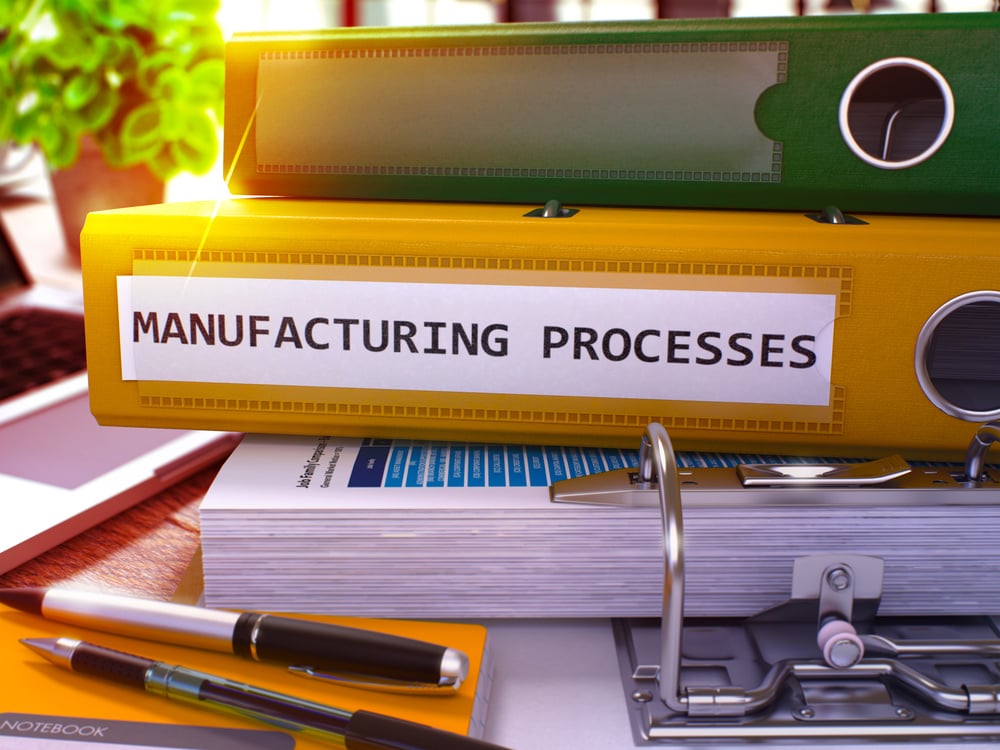Integrating Document Scanning with Business Workflow Automation
Table of contents
In the bustling world of modern business, the transition towards digital solutions is not just beneficial—it’s imperative. Document scanning, a process that converts physical papers into digital formats, plays a crucial role across various industries, particularly in sectors that manage a high volume of documentation. This technological solution is essential in addressing the contemporary challenges faced by businesses today.
Specifically, in the architectural and construction industries, where the handling and coordination of numerous documents like blueprints, contracts, and site plans are everyday tasks, efficient document management becomes a cornerstone of successful project execution. This is where workflow automation steps in. By automating routine processes, firms can focus on the more critical aspects of their projects, improving both productivity and accuracy. Let's delve into the challenges of traditional document management in these sectors and explore how integrating document scanning with workflow automation can bring transformative benefits.
The Challenges of Document Management in Architecture and Construction
The architecture and construction sectors are well-known for their extensive use of detailed documentation. Handling such a volume of documents, including blueprints, contracts, and site plans, is no small feat. The traditional methods of managing these crucial documents come with a host of challenges that can impede the efficiency and success of any project.
Volume of Documentation
Firstly, the sheer volume of paperwork in these industries can be overwhelming. Each project generates stacks of documents that must be stored, managed, and readily accessible for various teams and project phases. This high volume of paperwork not only requires significant physical storage space but also complicates document retrieval, which can hinder workflow and delay project timelines.
Challenges with Physical Documents
The reliance on physical documents brings several specific challenges:
- Storage Issues: Physical documents require extensive storage spaces that are secure and organized, which can be costly and difficult to manage.
- Accessibility: Retrieving specific documents from large archives can be time-consuming, which slows down decision-making processes.
- Risk of Damage or Loss: Physical documents are vulnerable to damage from environmental conditions like moisture or fire and can be lost or misfiled easily.
These challenges highlight the need for a more robust, efficient, and secure method of document management. Transitioning to digital document management through scanning and workflow automation not only addresses these issues but also adds a layer of efficiency that is crucial for staying competitive.
Benefits of Integrating Document Scanning with Workflow Automation
Adopting document scanning and integrating it into workflow automation systems offers transformative benefits for architecture and construction firms. This approach not only streamlines the management of documents but also enhances the overall efficiency of project workflows. Here’s how these technologies make a substantial impact:
Streamlining Document Access and Retrieval
With document scanning, all physical paperwork is converted into digital formats, making them easily searchable and accessible. Digital documents can be retrieved in seconds with simple keyword searches, significantly reducing the time spent searching through files. This immediate access is crucial during fast-paced project stages and can greatly accelerate decision-making processes.
Enhancing Collaboration Across Teams and Project Stages
Workflow automation ensures that once documents are digitized, they can be shared and accessed concurrently by multiple teams, regardless of their physical location. This capability is particularly beneficial in construction and architecture where project teams often work from different sites. Enhanced collaboration leads to more synchronized project management and fewer miscommunications.
Reducing Errors and Saving Time Through Automated Workflows
Automated workflows minimize human errors by standardizing processes like approvals, updates, and revisions. They ensure that all team members are working from the most current set of documents and that changes are tracked and implemented efficiently. Automation also reduces the administrative burden on staff, allowing them to focus on more strategic tasks that add value to the project.
Case Study: Enhanced Efficiency through Digital Integration
Consider a hypothetical scenario where an architectural firm adopts a comprehensive document scanning and workflow automation system. Previously, the firm struggled with delays caused by the manual retrieval of documents and miscommunications due to outdated blueprints being used on site. After integrating digital solutions, the firm reported a 30% improvement in project delivery time, a significant reduction in document-related errors, and enhanced team collaboration. These improvements underscore the tangible benefits that such technologies can bring to the sectors.
By addressing the key pain points in document management, these technological solutions empower firms to operate more effectively and adapt to the increasing demands of modern project execution.
Technical Overview of Document Scanning Solutions
The effectiveness of document scanning in architecture and construction relies heavily on choosing the right technology to handle the unique demands of the industry. Understanding the types of document scanners and software solutions available is essential for optimizing document management systems.
Types of Document Scanners
When selecting a document scanner for architectural or construction purposes, it's important to consider the types of documents predominantly used. Here are a few scanner types suited for these industries:
- Flatbed Scanners: Ideal for delicate documents like historical blueprints that cannot be fed through a traditional sheet-fed scanner.
- Sheet-fed Scanners: Efficient for scanning multiple pages quickly, suitable for contracts and regular-sized documents.
- Large Format Scanners: Specifically designed for oversized documents such as blueprints and detailed site plans. These scanners provide high-resolution images and ensure that all details are captured accurately.
Software Solutions for Document Management
Once documents are digitized, the next step involves managing these files efficiently. Software solutions play a pivotal role in this aspect by offering features like:
- Indexing and Searchability: Advanced software allows for the indexing of scanned documents, making them easily searchable by keywords, project names, or any other relevant metadata.
- Storage and Backup: Digital documents can be stored in cloud-based systems, offering better security and redundancy than physical storage. These systems also facilitate easy access from remote locations, enhancing collaboration.
- Integration with Digital Tools: Modern document management software often integrates seamlessly with other tools used in architecture and construction, such as CAD software and project management platforms. This integration ensures that all project-related information is centralized and easily accessible.
By utilizing appropriate scanning technology and software, firms can transform their document management practices into a more streamlined, secure, and efficient system. This technological upgrade not only aids in managing the current document load but also scales as the firm grows.
Implementing Workflow Automation with Document Scanning
Integrating document scanning into existing workflows can significantly enhance efficiency but requires careful planning and execution. Here’s a step-by-step guide to help architecture and construction firms implement this integration effectively:
Step-by-Step Guide to Integration
-
Assessment of Current Processes: Begin by evaluating your current document management processes to identify bottlenecks and areas for improvement. Understand which documents are accessed frequently and require quick retrieval.
-
Selecting the Right Scanning Solutions: Choose the appropriate scanning technology based on the types of documents commonly used in your projects. Consider factors like document size, volume, and the need for color accuracy.
-
Software Selection for Automation: Opt for software that not only supports efficient scanning and storage but also integrates with your current project management tools. The software should offer features like automated workflow triggers, easy sharing options, and robust security measures.
-
Pilot Testing: Implement the scanning and automation solution on a small scale first to iron out any kinks in the process. Use feedback from this phase to make adjustments before full-scale implementation.
-
Training and Onboarding: Educate your team about the new system. Comprehensive training ensures that everyone is comfortable using the new tools and understands the benefits and changes to their workflow.
-
Full Implementation: Once testing is complete and the system is optimized, roll out the solution across the organization. Monitor the integration closely for any issues that may arise and address them promptly.
-
Ongoing Review and Optimization: Regularly review the system's performance and make adjustments as necessary. Technology and business needs evolve, so continuous improvement will help maintain efficiency and relevance.
Considerations for Data Security and Compliance
Incorporating data security and compliance into your document management system is crucial, especially when dealing with sensitive project information. Compliance with regulations such as GDPR in Europe or HIPAA in the United States, if applicable, is essential. Ensure that your chosen solutions provide:
- Encryption: All digital documents should be encrypted both in transit and at rest.
- Access Controls: Implement role-based access controls to ensure that only authorized personnel can view or alter sensitive documents.
- Audit Trails: Maintain logs of who accessed or modified documents to ensure traceability and accountability.
By following these steps and ensuring adherence to security standards, firms can confidently integrate document scanning with workflow automation, thereby reducing risks and enhancing productivity.
Case Studies and Real-World Examples
Examining real-world applications of document scanning and workflow automation can provide valuable insights into their practical benefits and implementation strategies. Here, we look at several case studies from architectural firms and construction companies that have successfully integrated these technologies.
Case Study: Large Architectural Firm
A large architectural firm specializing in commercial properties faced significant challenges with managing their extensive documentation, including hundreds of ongoing projects each year. After implementing a sophisticated document scanning system and automating their workflow, they experienced:
- Improved Project Timelines: The time required to retrieve and distribute documents was reduced by 40%, accelerating project completion rates.
- Cost Savings: Reduction in physical storage needs and administrative costs contributed to considerable annual savings.
- Enhanced Compliance Adherence: Automated workflows improved compliance with industry regulations by ensuring that all procedures were followed systematically.
Case Study: Mid-Sized Construction Company
A mid-sized construction company implemented document scanning and workflow automation to manage their site plans and contractual documents more effectively. The results were impressive:
- Enhanced Collaboration: Real-time document access and updates enabled better coordination between onsite teams and office-based staff.
- Error Reduction: The incidence of errors due to outdated documents or miscommunication was significantly reduced, leading to fewer reworks and delays.
- Increased Data Security: With improved document control and access logs, the company enhanced the security of sensitive project data.
These examples underscore the transformative impact of integrating document scanning and workflow automation within the architecture and construction industries. By adopting these technologies, companies not only streamline their operations but also position themselves as forward-thinking, competitive players in a rapidly evolving market.
Future Trends in Document Management and Automation
As we look ahead, the role of emerging technologies like artificial intelligence (AI) and machine learning in document management is poised to grow. These technologies are expected to offer even more sophisticated ways to manage documents, predict needs, and automate workflows. For instance, AI could be used to automatically classify and tag documents based on content, while machine learning algorithms could predict which documents will be needed in future project phases, further enhancing efficiency.
Conclusion
In conclusion, the integration of document scanning and workflow automation presents a compelling opportunity for firms in the architecture and construction sectors to enhance efficiency, reduce costs, and improve project outcomes. These technologies address critical challenges in document management and provide a solid foundation for embracing future innovations.
For firms looking to remain competitive and streamline their operations, now is the time to consider implementing these solutions. We encourage you to take the first step towards digital transformation by filling out our "get a quote" form on our website. This will allow us to better understand your needs and tailor our solutions to fit your unique requirements.
Share this
You May Also Like
These Related Stories

Ensuring HR Compliance with Digital Document Solutions

Effective Management with Real-Time Electronic Document Systems

